Drywall vs. Sheetrock: How Do They Compare?
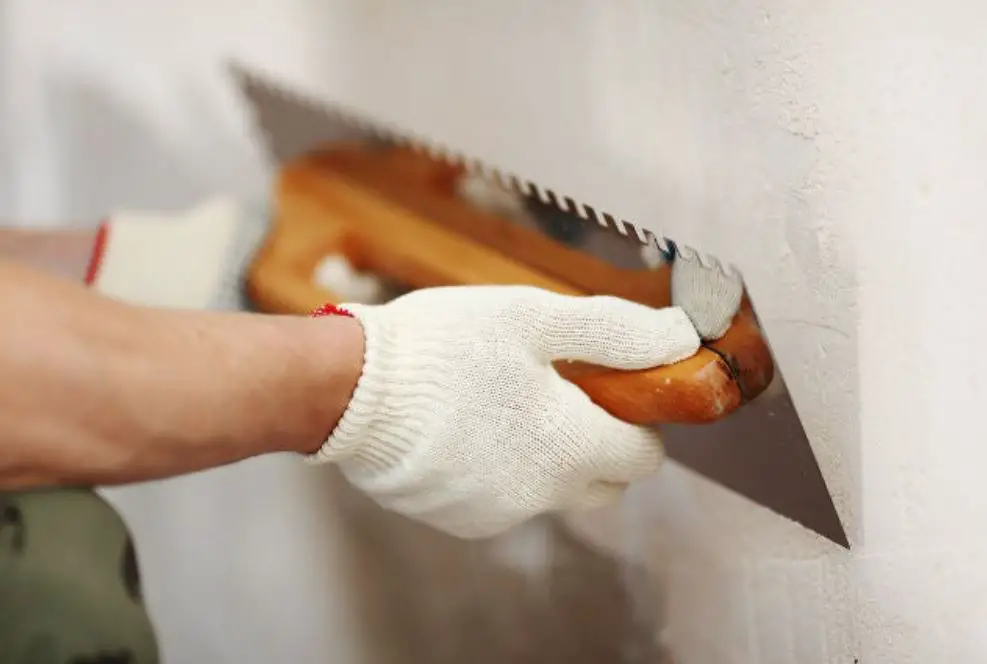
The U.S. Gypsum Company owns the exclusive rights to produce and market the Sheetrock brand of drywall. There is little to distinguish sheetrock from other drywall besides the chemicals that give it its patent.
You can build your walls and ceilings out of either one. However, it’s important to note that not all drywall is the same, as some varieties have a high sulfur content that can cause structural and health issues.
Knowing the differences between various types of drywall will be useful regardless of the size of your project, whether you plan to patch a hole in the wall, or completely remodel your basement.
Although “sheetrock” and “drywall” are often used interchangeably, this guide will help you distinguish between the two.
Overview of Drywall vs. Sheetrock
Drywall is a wall paneling made of gypsum plaster sandwiched between two layers of heavy paper. It’s a modern alternative to lath and plaster for interior walls and ceilings.
For instance, drywall panels are plasterboard, gypsum board, gyprock, and sheetrock.
Due to its widespread use, the brand name “Sheetrock” has become a generic term for the building material. Although some sheetrock is weatherproof and can be used on exterior ceilings, it is often used on interior ceilings and walls.
Only drywall manufactured by the U.S. Gypsum Company can be called sheetrock. Other drywall manufacturers include the National Gypsum Company, Titan Commercial Products, and Allied Manufacturing.
Quick Facts Comparison Table
Drywall |
Sheetrock |
All sheetrock can be classified as drywall. |
Not all drywall qualifies as sheetrock. |
Contains unique chemical compounds. |
Has a diverse chemical composition |
Various companies can manufacture it. |
Manufactured by the United States Gypsum Corporation. |
Compatible for use on interior walls, ceilings, and plaster construction. |
Compatible for use on interior walls, ceilings, exterior ceilings, and plaster construction. |
Drywall is a construction material. |
Sheetrock is a brand of drywall material. |
The U.S. Gypsum Company has exclusive rights to the Sheetrock brand of drywall. While drywall and sheetrock serve the same purpose, some differences govern other functions.
Keep reading to find out what sets drywall apart from sheetrock and which you should use for your next construction project.
Key Differences Between Drywall vs. Sheetrock
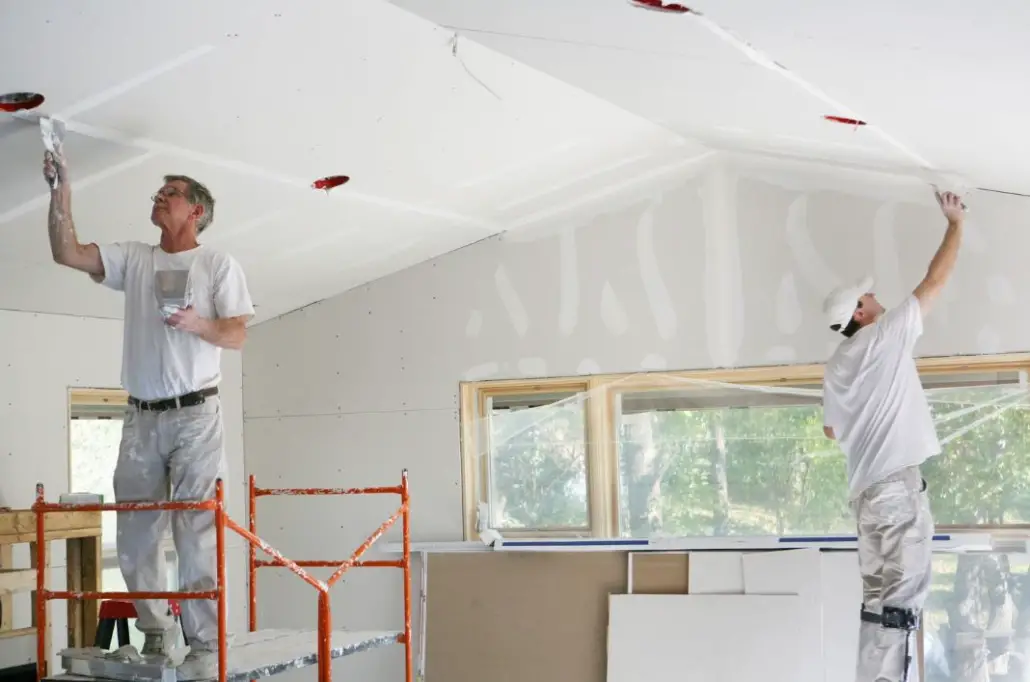
Sheetrock is a drywall brand and not a completely different building material. A similar comparison would be that Clorox is a kind of bleach.
Drywall and sheetrock are essentially interchangeable terms. Drywall, also called “gypsum board,” is a panel made of plaster of Paris in the middle of two layers of heavy paper.
The US Gypsum Company has a patented product line of drywall known as sheetrock. Both materials are common in constructing floors, walls, and roofs.
Aside from the chemicals that make the sheetrock formula patentable, there is no way to differentiate it from drywall. People frequently use both terms interchangeably.
Key Features of Drywall
Drywall refers to large boards or panels used to build walls in a house. The product is made by extruding gypsum calcium sulfate dihydrate between two sheets of backing paper.
Drywall is the standard material for building walls in the United States. That is because you can treat it with additives to make it fireproof, mildewproof, and watertight.
Drywall can be cut and shaped into almost any shape the designer wants because it is soft and easy to cut.
It’s strong enough to withstand daily wear and tear, paints beautifully, and doesn’t deform when nails are hammered into it. It’s a great insulator that helps keep the heat inside the house.
Advantages of Drywall
- Since it contains gypsum, the drywall is fireproof and won’t allow a fire to spread.
- You can reduce energy costs during construction as drywall is produced faster.
- The benefits of drywall outweigh its price tag.
- Drywall is versatile and can be used as a wall, ceiling, or divider. It is easily installed and removed and can be trimmed to fit any space. That allows a piece of drywall to be cut to size and used to cover the damage.
- You can easily hang pictures, artwork, and other decorations from the ceiling and walls if they are made of drywall.
Disadvantages of Drywall
- Drywall, as a general rule, is not water-resistant. Its quality may degrade if installed in a damp place, such as a bathroom or basement. Additionally, mold can grow in wet drywall. If there’s water damage to the drywall, it requires replacement.
- Plastering over the drywall is essential as it protects the surface from damage. Given its lack of durability in the face of impact, drywall is easily shattered, which could lead to holes, broken corners, and cracking joints. Fortunately, you can fix these issues with drywall patching materials.
- Drywall is simple to install, but hiring professionals are recommended. Improper finishing during installation can lead to issues with the joints and tapes.
- During installation, drywall generates a lot of dust that can spread throughout the house. Prepare the room ahead of time.
- Drywall, unfortunately, could be more sturdy. A disadvantage, but drywall plastering will make the surface much stronger, so it balances out
Key Features of Sheet Rock
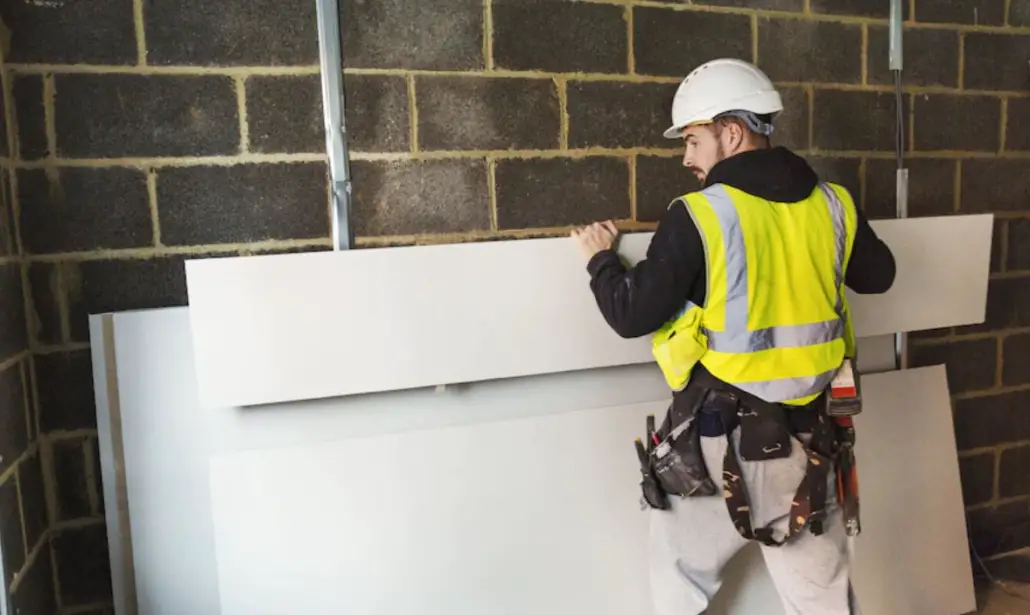
Sheetrock is just a brand of drywall, and that’s what makes it so intriguing. Both terms refer to the same thing and can be used interchangeably.
The United States Gypsum Corporation (USG) makes sheetrock. USG is also the largest distributor of wallboards in the country.
Despite coming close to bankruptcy in 2001, USG was still profitable every year during the Great Depression and again in 2013. Modern USG gives you a lot of options when building a house.
Some panels have better insulation and fire protection. Home expansion is made easy as sheetrock comes in various pre-cut shapes and different levels of thickness.
Advantages of Sheetrock
- Sheetrock, like drywall, can be installed over a home or business framework.
- Because of its reliability, Sheetrock is used in various construction settings.
- Sheetrock is better than other drywall brands because it is often higher quality.
Disadvantages of Sheetrock
- Some sheetrock brands give off the smell of sulfur, which can rust metals and make the room smell bad.
- Sheetrock is highly susceptible to water damage. Similarly, if the supports’ paper ever gets wet, it could mold and cost a lot to fix. Furthermore, 15%–17% of the material is lost due to the necessity of cutting the panels to size. Regardless, there are drawbacks, but the benefits outweigh them significantly.
How Do They Compare in Quality and Price?
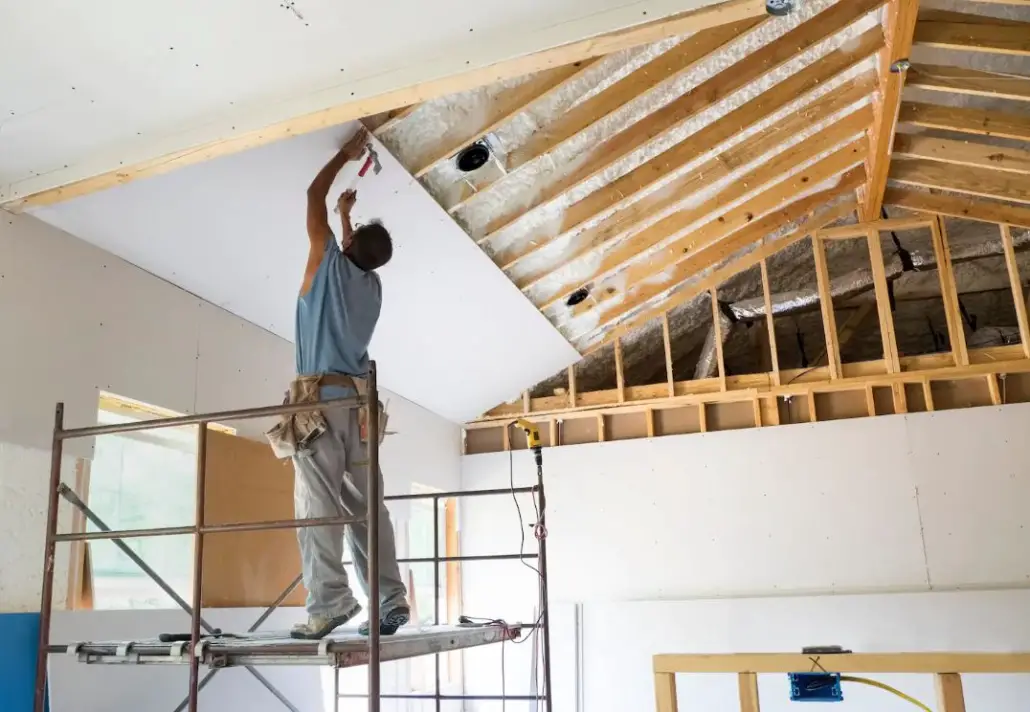
Drywall is a type of wall and ceiling covering made of gypsum board. Sheetrock is a well-known brand of drywall. Compared to other drywall forms, sheetrock is typically more expensive because of its superior quality.
How Do They Compare on Durability
Sheetrock is a popular brand of drywall. Compared to other forms of drywall, sheetrock is typically more expensive due to its superior quality. That quality applies to its functionality and durability.
Sheetrock vs. Plywood
Plywood is more long-lasting than sheetrock, but it has many drawbacks that make it less desirable. When plywood is broken, it is more difficult to repair than sheetrock. Since sheetrock is more common, it’s also easier to find a professional to install it.
Drywall vs. Gypsum Board
Gypsum is a common name for drywall. Typically, this substance is used instead of plaster since it can be compressed between two sheets of very thick paper. Drywall may be plasterboard, wallboard, sheetrock, gypsum board, buster board, custard board, or a gypsum panel.
What Should You Not Do When Drywalling?
Here are some common drywalling mistakes that could contribute to future challenges.
- Drilling too deeply
- Fastening the sheet before cutting it
- Positioning joints near doors and windows
- Placing too many joints
What Are Three Different Types of Drywall?
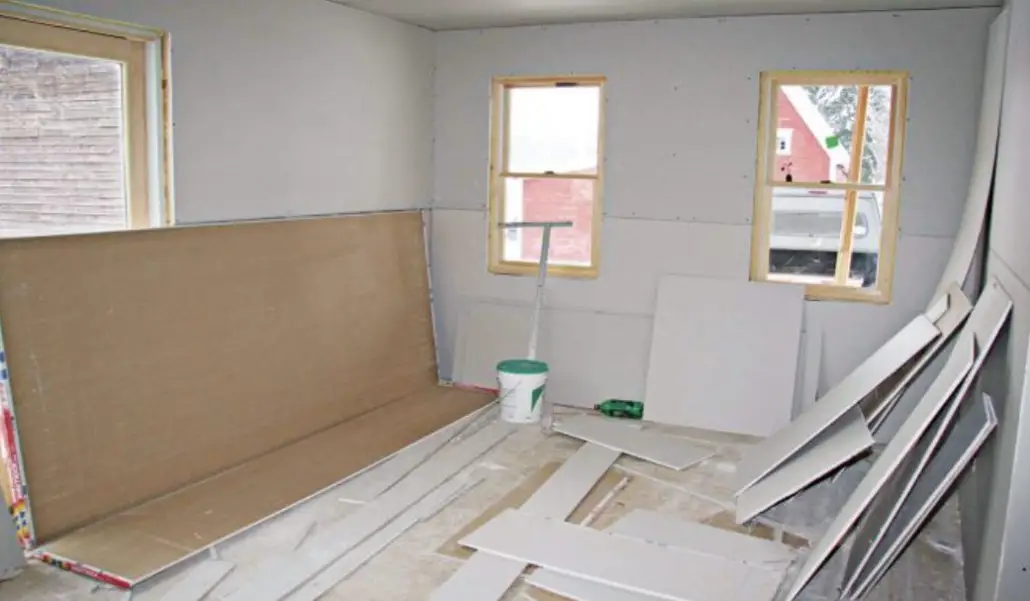
Whiteboard
It’s mostly used in the construction of new homes for walls and ceilings.
VOC-absorbing drywall” It is a new technology that combats VOC levels (volatile organic compounds) and formaldehyde, thus improving indoor air quality.
Acoustic drywall
It provides sound-dampening for rooms requiring more acoustic control, such as theaters or music rooms.
Greenboard
It is used in particularly wet areas where regular drywall would get damaged.
When Drywalling, What Do You Do First?
Put the sheetrock on the ceiling first, then move on to the walls. Make sure there are no sagging joists in the ceiling by using a 4-foot level.
What Can Damage Drywall?
Slamming furniture and doors against the wall is among the main causes of damage to sheetrock. Children playing sometimes bang doors behind them or throw toys randomly, which can also lead to damage.
If you find holes in your drywall, you should repair them without delay.
What Is an Acceptable Gap in Drywall?

You can pre-fill the gaps with all-purpose or taping compound if they’re less than 1/8 inch wide and then apply the finishing touches to the panels as usual.
If the spaces are bigger (between 1/8 and 1/4 inch), you can use the setting-type compound as a first step before putting the finishing touches on the panels.
Any spaces more than a quarter of an inch in size need immediate attention. The rule that panel edges should touch is broken, and the fact that there are such big gaps between them shows that the installation was done poorly.
How Do You Protect Sheetrock?
Adding wall protection to the design of a mixed-use building or single-family home can make the space last longer. It can also decrease the need for maintenance over time.
There are many ways to keep walls from getting damaged. That includes using corner guards, bumper guards, handrails, commercial corner guards, vinyl, and metal sheets.
Is Sheetrock Waterproof?
No. Sheetrock is less watertight than cement board or polystyrene foam board. Green drywall, which is supposed to be water resistant, still needs to be completely waterproof. Using sheetrock in a shower can lead to mildew, rot, and eventually crumbling walls.
What Happens if Sheetrock Gets Wet?
Drywall is fairly resilient but can be compromised by prolonged contact with water. Its structural integrity may deteriorate, leaving it flimsy and easily broken.
How Long Does Sheetrock Last?
Sheetrock used indoors has a 70-year lifespan under ideal conditions. But it can only last for a short time if it gets wet, insects like termites get in it, or if it gets used a lot.
Is Sheetrock Toxic?
It can be. The dust it emits can irritate your respiratory system, leading to coughing fits or even asthma attacks. Long-term exposure to silica, which could be present in the sheetrock, can cause cancer or lung disease.
Why Does Sheetrock Crack?
Cracks form when the organic materials that make up drywall are subjected to excessive pressure and stress. That is true in the case of foundation settlement, foundation heave, temperature and humidity fluctuations, and seismic activity.
Conclusion
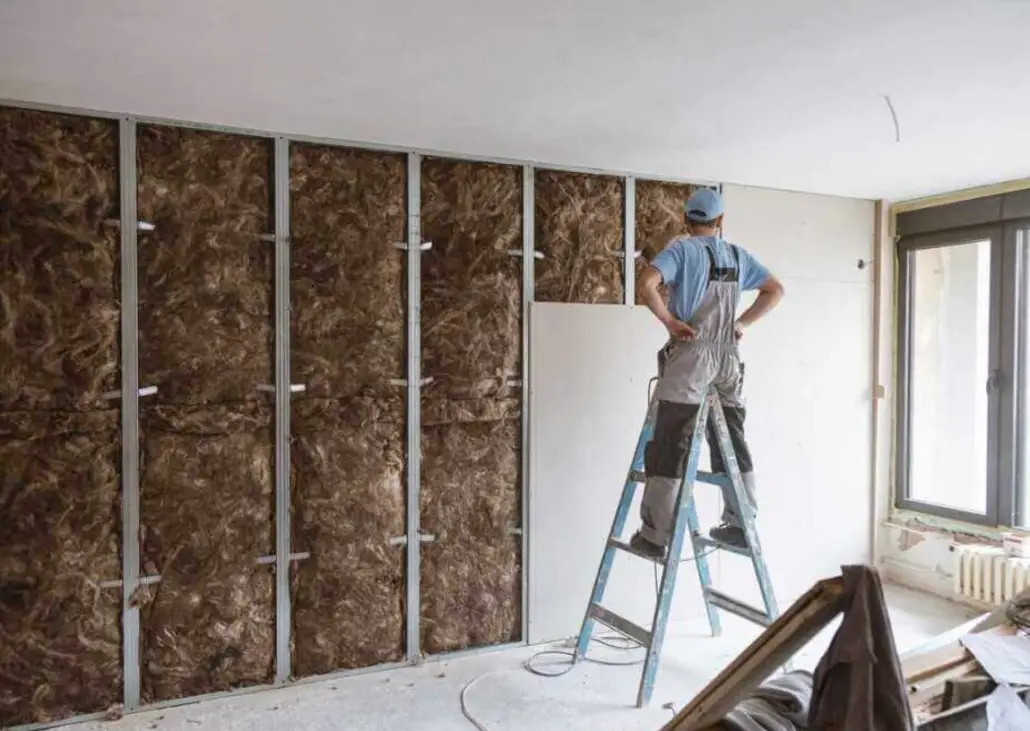
Whether starting from scratch or facelifting an old building, you need high-quality construction supplies. Drywall systems provide the stability and durability required for walls and ceilings.
Furthermore, it can be cut to any size and shape and is simple to remove and reinstall. As a result, production time is reduced, reducing the power needed to build them.


